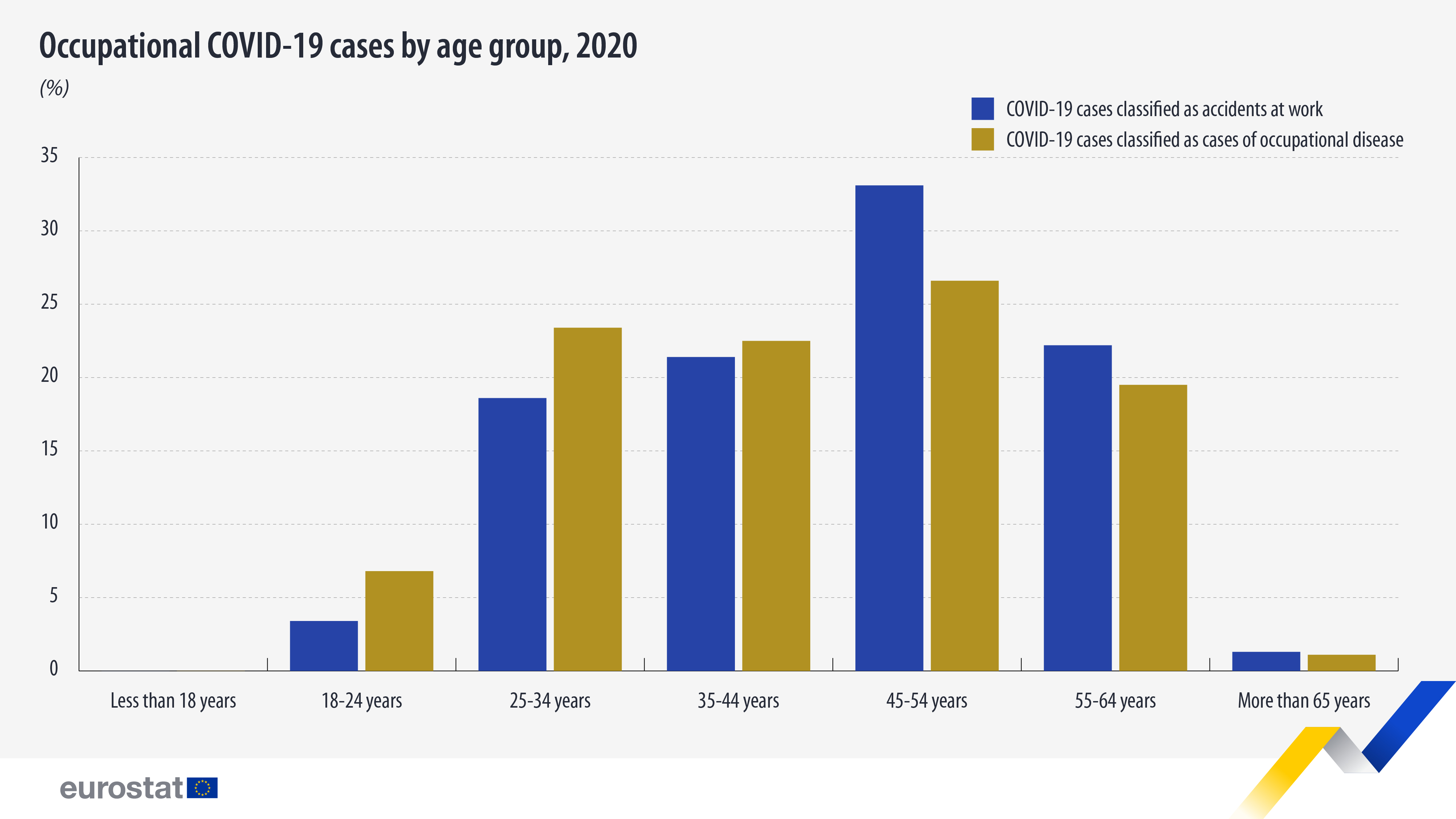Occupational COVID-19 cases: how many in 2020?

Occupational COVID-19 cases in 2020 were reported as accidents at work or cases of occupational disease.
In 2020, 5% of work accidents in the EU were due to COVID-19, and 8% of recognised occupational diseases were COVID-19 cases. Over 148 000 COVID-19-related work accidents occurred, while 9 113 COVID-19 cases were reported as cases of occupational disease.
In the same year, the human health and social work sector accounted for 76% of occupational COVID-19 cases reported as work accidents. This sector also made up 74% of occupational COVID-19 cases reported as occupational disease cases. Public administration, defence, compulsory social security and manufacturing were the other most affected sectors for both work accidents and occupational diseases concerning COVID-19.
Source dataset: Eurostat’s calculations based on ESAW, EODS data collections
Occupational COVID-19: workers’ profiles
The analysis of work accidents and occupational diseases data reveals that female workers had a higher number of cases than male workers (73% of occupational COVID-19 cases reported as accidents at work and 72% reported as occupational disease). The most affected age group was 45-54 years old (33% and 27% among the age groups).
Source dataset: Eurostat’s calculations based on ESAW, EODS data collections
The health sector, specifically human health and social work activities, was the most impacted (23% of work accidents reported in this sector were occupational COVID-19 cases and 39% of occupational diseases recorded in the sector were classified as occupational COVID-19 cases). However, the affected occupational groups differed: health-associated professionals had the largest share of COVID-19-related work accidents (35% among the occupational groups), while personal care workers had the largest share of COVID-19 cases recorded as cases of occupational disease (15%).
This information is being published to mark the World Day for Safety and Health at Work, which is held on 28 April.
For more information
- Possibility of recognising COVID-19 as being of occupational origin at national level in EU and EFTA countries
- Dedicated section on health
- Database on health and safety at work
Methodological notes:
- Occupational diseases – experimental statistics: data not available for Germany, Greece and Portugal.
- Health-associated professionals: tasks include clinical tests on specimens of bodily fluids and tissues, and occupations include Medical and Pharmaceutical Technicians or Nursing Associate Professionals.
- Personal care workers: tasks include providing care, supervision, and assistance for children, patients, and elderly, convalescent, or disabled persons in institutional and residential settings.
- Health and Safety at Work Statistics (Occupational Health) produce a wide range of information about accidents at the workplace and occupational diseases. These data are collected and reported annually as part of two collections: European Statistics on Accidents at Work (ESAW) and European Occupational Diseases Statistics (EODS) experimental statistics.
- Eurostat did not create separate tables for occupational COVID-19 cases due to varying approaches by countries in recognising such cases.
- The recognition and compensation of work accidents or occupational diseases are determined nationally. National authorities also decide on measures to protect people from SARS-CoV-2 exposure or infection. Workers in specific sectors who contract COVID-19 at work may gain certain rights according to national rules. All 27 EU countries acknowledge the occupational risk of COVID-19, but differ in how they investigate cases, which sectors and occupations are included, and whether it is limited to the health sector.
If you have any queries, please visit our contact us page.


